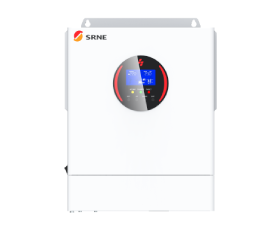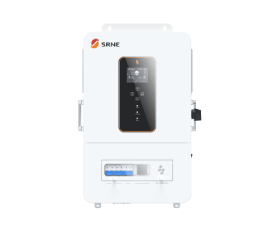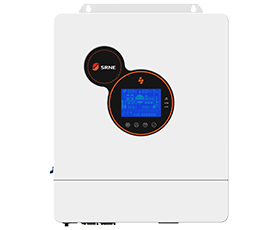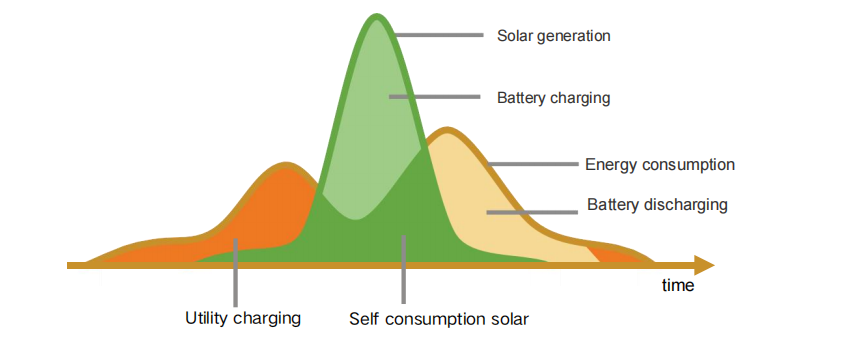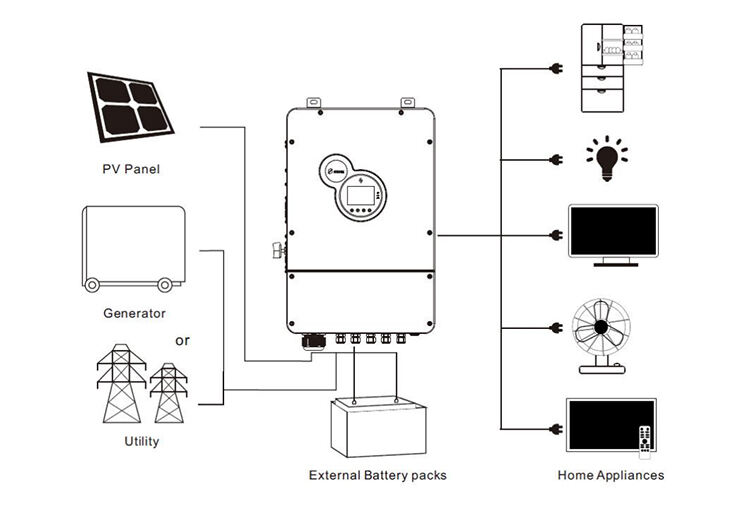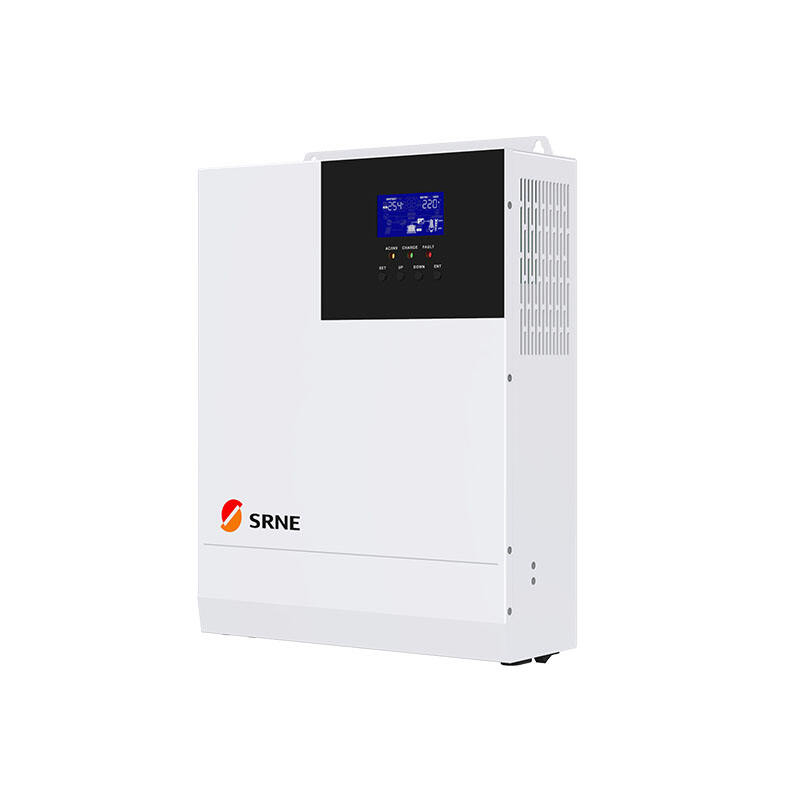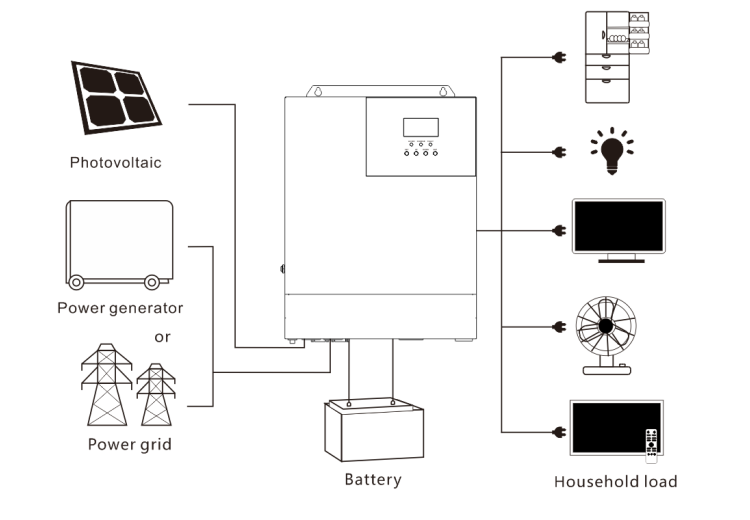The difference between hybrid inverter and off-grid inverter
Hybrid inverters and off-grid inverters are both types of power conversion devices used in solar energy systems, but they serve different purposes and have distinct features. Here's a breakdown of the differences between the two:
Hybrid Inverter:
A hybrid inverter, also known as a multi-mode inverter, is designed to work in conjunction with both solar panels and battery storage systems. Its primary function is to manage the flow of electricity between these two sources and the grid. Here are the key features of a hybrid inverter:
1. Grid Connection: Hybrid inverters are designed to be connected to the grid. This means that they can export excess energy generated by your solar panels back to the grid and can also draw energy from the grid when your solar production is low.
2. Battery Integration:One of the main features of hybrid inverters is their ability to integrate with battery storage systems. They can charge the batteries using excess solar energy and discharge them when solar production is insufficient.
3. Modes of Operation:Hybrid inverters typically have multiple operating modes, such as grid-tie mode (exporting excess energy to the grid), off-grid mode (using stored battery energy when the grid is unavailable), and hybrid mode (a combination of grid-tie and battery backup).
4. Backup Power: Hybrid inverters can provide backup power during grid outages by utilizing the energy stored in the connected batteries. This is a significant advantage, as it allows you to maintain power supply even when the grid is down.
Here, we recommend our HES series products to you:
HES series is a new type of solar energy storage inverter control inverter integrating solar energy storage & utility charging and energy storage, AC sine wave output. It adopts DSP control and features high response speed, reliability, and industrial standard through an advanced control algorithm.
Features
• Supports lead acid battery and li-ion battery connections.
• With a dual activation function when the li-ion battery is dormant; either mains/photovoltaic power supply access can trigger the activation of the li-ion battery.
• Support single-phase pure sine wave output.
• Supports four different voltage levels of 200\208\220\230\240Vac per phase.
• Supports two solar inputs and simultaneous tracking of two solar maximum power charging/carrying capacity functions.
• Dual MPPT with 99.9% efficiency and maximum 22A current in a single circuit, perfectly adapted to high power modules.
• 4 charging modes are available: solar only, mains priority, solar priority, and mixed mains/PV charging.
• With the time-slot charging and discharging setting function, you can set the time period for cutting in/out of mains charging and switch the time period between battery discharging and mains bypass power supply mode.
• Energy saving mode function to reduce no-load energy losses.
• With two output modes of utility bypass and inverter output, with uninterrupted power supply function.
• LCD large screen dynamic flow diagram design, easy to understand the system data and operation status.
• 360° protection with complete short circuit protection, over current protection, over under voltage protection, overload protection, backfill protection, etc.
• Support CAN, USB, and RS485 communication.
The diagram below shows the system application scenario of this product. A complete system consists of the following components:
• PV modules: converts light energy into DC energy, which can be used to charge the battery via an inverter or directly inverted into AC power to supply the load.
• Utility grid or generator: connected to the AC input, it can supply the load and charge the battery at the same time. The system can also operate generally without the mains or generator when the battery and the PV module power the load.
• Battery: The role of the battery is to ensure the regular power supply of the system load when the solar energy is insufficient and there is no mains power。
• Home load: Various household and office loads can be connected, including refrigerators, lamps, televisions, fans, air conditioners, and other AC loads.
• Inverter: The energy conversion device of the whole system. The actual application scenario determines the specific system wiring method.
Off-Grid Inverter:
An off-grid inverter, as the name suggests, is designed for use in systems that are completely disconnected from the grid. These systems are often found in remote areas or places where grid access is not available. Here are the key features of an off-grid inverter:
1. Isolation from Grid:Off-grid inverters are not connected to the utility grid. They are used in standalone systems where solar panels, batteries, and other energy sources are the only sources of power.
2. Battery Integration: Like hybrid inverters, off-grid inverters can also work with battery storage systems. They charge the batteries using solar energy and provide power to the loads directly from the batteries.
3. No Grid Export:Off-grid inverters do not export excess energy to the grid, as they are not connected to it. All energy generated by the solar panels is either used to power loads immediately or stored in batteries for later use.
4. Backup Power: Off-grid systems inherently provide backup power, as they are not reliant on the grid. The batteries store excess energy for use during nighttime or periods of low solar production.
In summary, the main difference between a hybrid inverter and an off-grid inverter is their grid connection. Hybrid inverters are connected to the grid and can operate in various modes, including exporting energy to the grid and providing backup power. Off-grid inverters, on the other hand, are designed for standalone systems that are not connected to the grid and rely entirely on solar and battery power.
Here, we recommend our HF series products to you:
HF series is a new type of mixed solar energy storage inverting & control all-in-one machine integrating solar energy storage & municipal power charge storage and AC sine wave output. It adopts DSP control and advanced control algorithm to achieve characteristics of high response speed, high reliability and high industrial standard.
Feature:
1. Adopt full digital voltage and current double closed-loop control and advanced SPWM technology to output pure sine wave.
2. Two output modes, i.e. mains bypass and inverter output can achieve uninterrupted power supply function.
3. Four optional charge modes: only solar energy, mains priority, solar energy priority and mixed charge.
4. Advanced MPPT technology, with efficiency up to 99.9%.
5. Wide MPPT voltage range.
6. With function of activating lithium battery with solar energy and AC mains power, it supports connection of lead-acid battery and lithium battery.
7. LCD screen design and 3 LED indicator lights dynamically display system data and operation states.
8. ON/OFF rocker switch can control AC output.
9. With power saving mode function, it can reduce no-load loss.
10. Intelligent adjustable speed fan is adopted for efficient heat dissipation and extended system life.
11. Possessing multiple protection functions and 360° comprehensive protection.
12. Possessing complete short circuit protection, over voltage and under voltage protection, overload protection, back filling protection, etc.
13. It has the function of mixed load: when the battery is not connected, photovoltaic and commercial power can supply power to the load at the same time (if there is no battery, the commercial power must be connected). When the battery is full, it can also enter the mixed load mode, which can make full use of the photovoltaic energy.
The figure below shows the system application scenario of this product. A complete system includes the following parts:
1. Photovoltaic module: convert the light energy into direct current energy and then charge the battery via the all-in-one machine, or directly invert the light energy into alternating current to supply power to the load.
2. Mains or generator: connected at the AC input, it can supply power to the load and charge the battery at the same time. If no mains power or generator is connected, the system can also operate normally. At this time, the load power is supplied by the battery and photovoltaic modules.
3. Battery: the battery is to ensure the normal power consumption of the system load in case of no sufficient solar energy or mains supply.
4. Household load: it can be connected to various household and office loads, including AC loads such as refrigerators, lamps, televisions, fans, air conditioners, etc.
5. Inverting and control all-in-one machine: the energy conversion device of the whole system.The specific system wiring mode is determined by the actual application scenario.

































